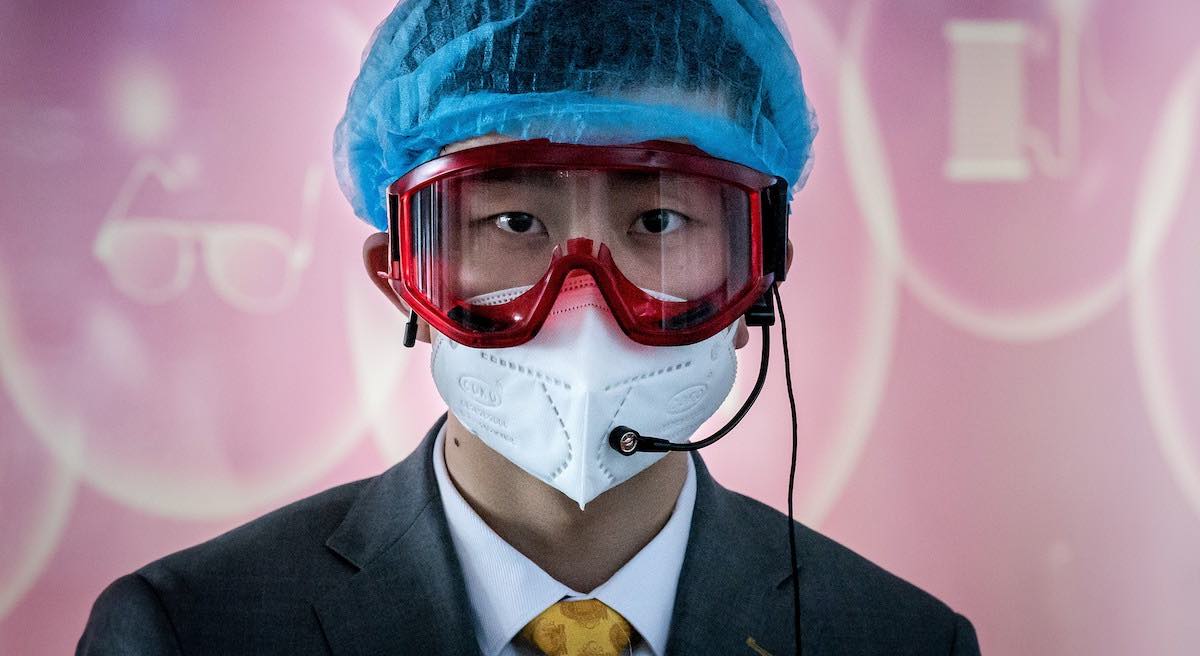A second deadly wave of Covid-19 could crash over China like a tsunami.
As the disease goes global and the pandemic epicenter switches to Europe, Imperial College London has warned in a report of the dangers of phase two.
Already the outbreak has been described as “the most serious” public health threat “since the 1918 H1N1 influenza pandemic,” which infected one-third of the planet’s population or an estimated 500 million people. The death toll eventually soared to 50 million worldwide.
“In the United Kingdom and the United States, suppression will minimally require a combination of social distancing of the entire population, home isolation of cases and household quarantine of their family members. This may need to be supplemented by school and university closures,” the study released earlier this week by the Imperial College Covid-19 response team stated.
Quickly rebound
“The major challenge of suppression is that this type of intensive intervention package will need to be maintained until a vaccine becomes available [which could] potentially [be] 18 months or more – given that we predict that transmission will quickly rebound if interventions are relaxed,” it said.
“While experience in China and now South Korea show that suppression is possible in the short term, it remains to be seen whether it is possible long-term and whether the social and economic costs of the interventions adopted thus far can be reduced,” the report added.
More than 198,000 people have so far been infected globally with the death toll spiraling past 7,900. Recovery figures are hovering around 82,700. In China, close to 81,000 people have been infected with a mortality rate of nearly 3,250.
Italy, Spain and France have reported the worst outbreaks in Europe, while there have been more than 4,700 official cases in the US.
For China, the back-to-work program, which has been underway for the past two weeks, will pose new challenges, including the possibility of a “second wave.”
“With millions of workers heading back to the factories, dining in the shared cafeterias and sleeping in the shared dormitories, the risk of a second wave of infections could be substantial,” Heiwai Tang, of the Institute for China and Global Development at the University of Hong Kong, said in a commentary for the South China Morning Post.
Ramping up production has become a major priority after vast swathes of the world’s second-largest economy were shut down for more than two months.
Factories, businesses and schools were closed in the battle to stop the spread of the Covid-19 epidemic. Yet within three months after it was first officially detected in Wuhan last December, more than 110 countries were reporting cases of the coronavirus.
“As the outbreak subsides in China, factories are being reopened. In the country’s big manufacturing hubs – Shanghai, Chongqing and the provinces of Guangdong, Jiangsu and Shandong – more than 90% of the manufacturers are up and running,” Zhou Xiaoming, the former deputy permanent representative of China’s Mission to the United Nations office in Geneva, said.
“Gradually and surely, Chinese factories will return to full capacity. This will minimize the impact of the virus on global supply chains. This is seen by China as not merely in its own interest but also as a way to fulfill its responsibility as a major player in the global community. Contrary to what is happening in China, the situation in the rest of the world is likely to get worse before it gets better,” Zhou added on China-US Focus, a website for academic discussion.
Risks dismissed
Remarkably, risks of a “second wave” are being dismissed even though hundreds of millions of people are on the move. They include 280 million migrant workers or more than the entire workforce of the 27-nation European Union.
“The outbreak in China, which started last December, has almost seen its end. We will wait for another month to make the final judgment but personally speaking, a second domestic outbreak in China is not a great concern with such strong prevention and control measures,” Cao Wei, the deputy director of the Peking Union Medical College Hospital’s infectious disease department, said earlier this week.
Transparency issues have bubbled just beneath the surface since the outbreak of the virus, triggering anger on Chinese “social media sites” and rattling President Xi Jinping’s administration. Accusations of incompetence were leveled against Xi and his inner circle for their early response to the crisis, as well as reports of a “cover-up” by officials in Wuhan.
Even now, quarantine centers are being set up in major airports in Beijing, Shanghai and Guangzhou for Chinese nationals coming back from abroad. In Hong Kong, the Center for Health Protection reported on Tuesday that the city was seeing a “second wave” of infections as residents return from overseas trips.
“For humans, there is a lack of existing immunity to the new virus,” Dr Joseph Fair, an epidemiologist and virologist, as well as a senior fellow in global health at the Smithsonian Institution in Washington, said earlier this month.
Moreover, that has not changed, adding to the risk of a “second wave” to this global pandemic.
























